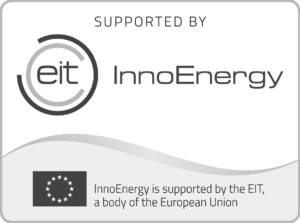01.06.2016
Streago: A secure platform for sharing 3D files
This comprehensive 3D printing software enables to upload, store and share designs without violating intellectual property rights. Moreover, this secure 3D printing method can provide many benefits in the field of medicine.
“It is a cloud-based service intended for additive manufacturing. The platform enables cooperation between the designer, the industrial client and the manufacturing company in a secure way – the design stays on the cloud. Designer uploads the finished model to the cloud and it is streamed to the manufacturing company. The company is responsible for the final result. Our platform guarantees effective and convenient workflow,” explains the founder of Streago, Henry Aljand.
It is a convenient platform connecting different parties involved in the additive manufacturing process. “It is very easy for the designer to upload the design, the industrial client is able to view the model and, after that, the manufacturer can produce the desired object. Everybody can work on the project together, according to their given permissions,” explains Aljand.
There are communication channels through which the users of Streago can privately discuss the issues with their partners. “In addition, we can set user permissions and access to files – for example, who is allowed to view, edit or delete the file and who is allowed to print the object,” Aljand adds.
A secure platform for design files
The essential feature of Streago’s solution is the file streaming technology, which guarantees that the file will never physically fall into the wrong hands. Aljand explains that the file is securely and permanently stored in the cloud: “In order to ensure intellectual property protection, the design file is sent to the production machine piece-by-piece – the complete model never reaches the printer.”
At the same time the manufacturer has complete control over the entire manufacturing process. The manufacturer has access to the cloud, he is able to determine production time, choose between several machines/printers and set other parameters for a successful and high-quality end result.” In order to benefit from Streago platform, one needs to register as a user.
“The Streago solution allows for distributed manufacturing, where the client, manufacturing facility and designer may all be physically located in different countries and may not even know one another. That is why secure cloud-base service is of importance.” Aljand highlights that they always install Streago software to the printers of their clients – in this way, the entire production chain will be secured.
3D solutions in the medical sector
Medicine is one of the fields associated with Streago cloud service. As you know, all patient info must be strictly confidential. Our platform guarantees confidentiality. For example: if the doctor uploads patient`s bone file, the manufacturing company never receives the complete model. The object is printed by streaming the file and, later, the final object will be sent to the hospital,” explains Aljand.
Aljand notes that each patient is unique and, therefore, we need a unique approach in medical services, too. In the AD, the object is printed layer-by-layer – this enables to create all kind of shapes at a relatively reasonable cost. “This kind of technology has brought a significant change to the field of medicine. Even today, we can say that ceramic dentures and orthopaedic products are 3D printed. In 2014, for example, 6.8 million dental-related objects were printed by using German EOS metal printers. I believe that, in the future, all dentures, dental crowns and other details will be produced by using that kind of technology,” says Aljand.
Using Streago’s solution, prototypes of different body parts can be produced for study purposes. “In the USA, for example, doctors use 3D printed brain models before brain surgeries. The surgeon carefully studies the model before the operation – he is familiar with the patient`s brain structure and, as a result, the operation takes less time and the outcome might be more successful than it would have been,” notes Aljand. In addition, the 3D printing method can be successfully employed when producing medical instruments. This way, surgeons may adjust standard instruments to their own needs, depending on the patient`s body, and even print the objects during the surgery.
“Maybe in the future before a complicated operation all surgeons will ‘print’ the organ they will be operating on. This is only one of our visions for the healthcare sector to aspire to,” Aljand imagines.
Designing in a new way
According to Aljand, in case of additive manufacturing, we could synthesize anything. “You can let your imagination flow. The additive manufacturing has changed the entire design and manufacturing process. It is significantly different from traditional manufacturing since the machines are limited in their ability to create different shapes and cavities.”
In short, all users benefit from Streago solution since it accelerates the manufacturing process. “Principally, the solution enables to receive production orders for specific objects conveniently and effortlessly and, even more, the client can hold the product in his hand only in a few days,” explained Aljand. Aljand admits, however, that today 3D printers are still too expensive. For that reason, this kind of manufacturing is not very widespread yet.
“I think that the cloudbased service we are offering is unique. As far as we know, no one else is offering a similar product. Our technology has been patented,” Aljand said.
Streago has made valuable contacts at the Connected Health Cluster: “It brought us together with the right people. Being a member of the cluster, we have learned a lot about market behaviour and demands. This has a practical value and we may also find the same people to be among our future clients.












